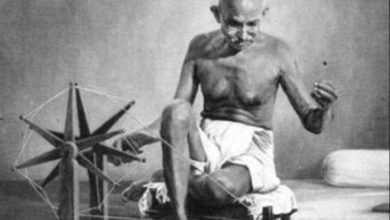Benefits of Yoga-Surya Namskar and When it Comes in India
Yoga positions involve simple movements well within the performing capacity of the normal individual and for best results the mind and the body must work in phase and complement each other.

Yoga began in India 3,000 to 4,000 years ago. The word yoga comes from the Sanskrit language and means, to join or integrate, or simply union. Yoga started, as far as we know, as part of India’s philosophical system, but not everyone practiced yoga, and it has never been a religion.
Whatever it is, you have taken the first step to improving your fitness. Now you are considering working on becoming more flexible. You read somewhere that, to have a “total fitness program,” you need to include not only increased activity, but also flexibility and strength.
Classical yoga as defined by Patanjali is an eight stages process of spiritual development Ashtanga (eight step) yoga. The first two stages are ethical disciplines (Yamas and Nyamas). Then come postures (Asanas in Sanskrit) and breathing exercises (Pranayama). The last four limbs are meditative stages: control of the sense (Prathyara), concentration (Dharana), meditation (Dhyana) and enlightenment (Samadhi). Yoga has become a very common term in the Western world today.
Yoga positions involve simple movements well within the performing capacity of the normal individual and for best results the mind and the body must work in phase and complement each other.

Having achieved a certain amount of pliability, you would need to correlate mental and physical activities and this is where these yoga positions help. A gradual stretching of the body helps to extend the back portion of spine and in the process certain elasticity is achieved that adds suppleness to the limbs. Paschimotanasana if done regularly will keep those aches at bay.
Happiness is in the mind, and the mind is supported by the body – a healthy mind lives in a healthy body. Your happiness depends on your mind and it depends on your body. Without physical health you can’t be completely happy, and without mental happiness you can’t be completely healthy. Health is a positive state; not just the absence of a negative one. It’s not only the absence of disease. For too long now traditional Western medicine has treated illness as only a disease: an enemy that attacks you and needs to be counter-attacked; but in reality it’s nothing more than an imbalance in the natural harmony of body and mind. True healing means restoring that balance, and true health means keeping it.
Yoga also teaches that the individual is empowered to affect change in his or her own life. The yoga philosophy is taught in many metaphysical and psychological schools of thought, and there are examples of specific ways to practice this philosophy herein. In addition, there is a section which explores the spiritual side of yoga as well as other forms of spiritual exploration.
Yoga practitioners claim that all forms of the discipline offer health and physical benefits – from lowering blood pressure to improving flexibility.
It also helps to improve posture by teaching relaxation of the neck, shoulders and upper back, easing tension that can trigger aches and pains in the back.
Imagine going through all those yoga positions at one go. Never do that. Listen to your body and when it cries halt, just stop. Practice different sets of asanas each day for variety, or initially to start off with do it every alternate day for 15-20 minutes. Increased blood flow, removal of toxins, an invigorated spirit, a toned body, flexible joints and tendons, effective digestion, a sense of well being and a remarkable zest for life are just some of the benefits that accrue.
Surya Namskar
There are many methods of practicing Surya Namaskar but Shripad Damodar Satwalekar first introduced the method of 12 poses of Surya Namaskar which are used today in the entire world.
Surya Namaskar is a sequence of around twelve yoga asanas connected by jumping or stretching movements, varying somewhat between schools. In Iyengar Yoga, the basic sequence is Tadasana, Urdhva Hastasana, Uttanasana, Uttanasana with head up, Adho Mukha Svanasana, Urdhva Mukha Svanasana, Chaturanga Dandasana, and then reversing the sequence to return to Tadasana; other poses can be inserted into the sequence
sequence is Pranamasana, Urdhva Hastasana, Uttanasana, Phalakasana (high plank), Chaturanga Dandasana, Urdhva Mukha Svanasana, Adho Mukha Svanasana, Uttanasana and back to Pranamasana.
sequence is Pranamasana, Utkatasana, Uttanasana, Ardha Uttanasana, Phalakasana, Chaturanga Dandasana, Urdhva Mukha Svanasana, Adho Mukha Svanasana, Virabhadrasana I, repeat from Phalakasana onwards with Virabhadrasana I on the other side, then repeat Phalakasana through to Adho Mukha Svanasana (a third time), Ardha Uttanasana, Uttanasana, Utkatasana, and back to Pranamasana

Benefits of Surya Namaskar:
- Improves function of Internal Organs
- Improves Muscle tone
- Improves Posture
- Helps cope with Insomnia
- Strengthens the body
- Helps relax our mind
- Improves flexibility
- Helps burn excess fat
- Helps build mental focus
- Improves blood circulation




